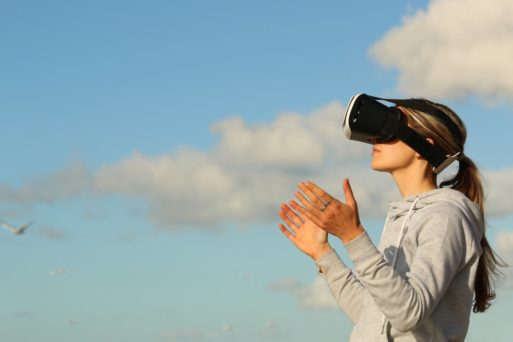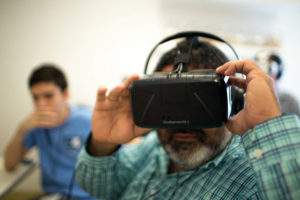
Credit: Pexels.com
Diving enthusiast Matthew Hill had always wanted to explore the Great Barrier Reef. But when Hill was diagnosed with bowel cancer, he was forced to put this dream aside. The cancer left Hill’s body in a weakened state. He couldn’t even sit upright in bed, let alone swim. But Hill’s nurses at St. Luke’s Hospice in Plymouth, England, refused to let Hill’s give up on his dream. So they landed on the next best thing: a virtual reality bucket list tour of the reef from the comfort of his hospice bed.
Although Hill couldn’t visit the reef in person, he was still able to immerse himself in the VR experience. VR company Truvision created a custom virtual reality bucket list program from scratch that allowed him to “swim” through the reef while realistic images of coral and marine wildlife moved around him. After using the VR program, Hill’s nurses said that he appeared happier than he had been in previous months. Even his physical condition improved somewhat.
Alleviating Stress
Some of the biggest challenges that terminally ill people face is lack of mobility, decreased energy and inability to travel. This is especially difficult for those who still have items on their bucket lists that they want to accomplish or see before they die. As a result, many people grow disheartened or even depressed in the months before their deaths. Virtual reality bucket lists help alleviate some of this stress.

A street in the Yemin Moshe neighborhood of Jerusalem
Credit:commons.wikimedia.org
For some, virtual reality is a way to look back on old memories and a life well-lived. For instance, terminally ill cancer patient Souzan Aprahamian grew up in Jerusalem, but she wasn’t able to go back to her hometown due to her illness. Instead, she was able to explore her old neighborhoods through a VR headset. This allowed her to revisit her past and look back fondly on her memories from the city.
For others, a virtual reality bucket list is a way to explore new parts of the world for the very first time. Virginia Anderlini, a 103-year-old woman living in San Francisco, frequently visited a virtual version of a Hawaiian beach. But rather than using hyper-realistic images, the program’s creator, Dr. Sonya Kim, made the scene look as stunning as possible, with bright, vibrant colors that Anderlini might never have seen in real life, even if she were well enough to travel.
Dr. Kim explains that she wanted to create a scene that would offer serenity and peace to her patients, giving them a momentary break from the monotony of daily life in elderly care facilities. Through her studies in VR, Dr. Kim has found that these programs can help patients manage depression, anxiety and even chronic pain. Dr. Kim finds that dementia patients in particular find VR programs relaxing and beneficial, since the disease often causes significant psychological as well as physical stress.
Easing into the Process

Credit: Flickr.com
In order to get the most benefit out of a virtual reality bucket list, IT consultant David Parker says that people should be eased into the process. Rather than immediately placing them into a new virtual world, Parker’s programs start off slowly, often beginning with a virtual recreation of the hospital room in which the person is staying. The goal is to completely immerse them in the full experience, including what it’s like to travel on a plane or in a taxi to get to a new, exciting destination. Part of the fun of travel is the anticipation of arrival, and Parker tries to capture this in his programs.
As virtual reality bucket list programs become more realistic in appearance and easier to make, we could see more programs like Parker’s in hospices and hospitals around the country. Soon, every terminally ill person may be able to explore any region of the world they’d like, all without leaving the comfort of their beds.

 A Virtual Reality Bucket List Helps Dying Patients Travel the World
A Virtual Reality Bucket List Helps Dying Patients Travel the World




 Composting Bodies Is Now Legal in a Dozen States
Composting Bodies Is Now Legal in a Dozen States














